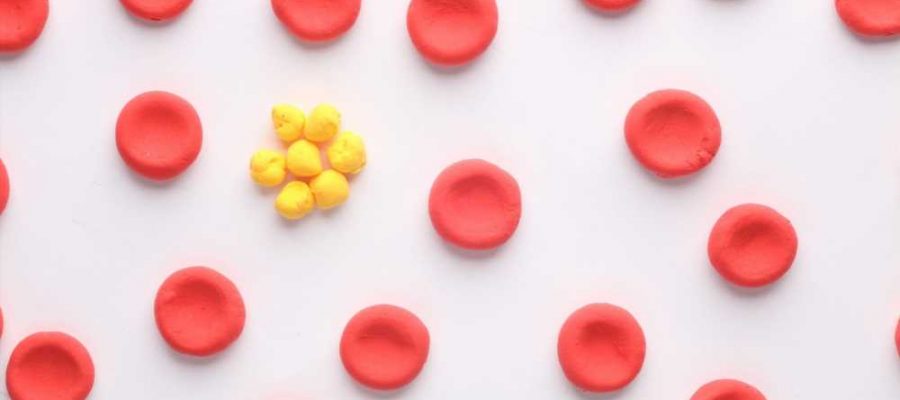
Nine-year study reveals lipids' pivotal role in aging, health, and disease
In a recent study published in the journal Nature Metabolism, a team of researchers conducted detailed longitudinal profiling and analysis of the lipidome using plasma samples from over a hundred participants over nine years to understand the roles of various types of lipids in health, aging, and disease in humans.
 Study: Dynamic lipidome alterations associated with human health, disease and ageing. Image Credit: Vladimir Sukhachev / Shutterstock
Study: Dynamic lipidome alterations associated with human health, disease and ageing. Image Credit: Vladimir Sukhachev / Shutterstock
Background
Lipids play essential roles in the human body in processes such as cell signaling, maintenance of cellular structure, and energetics. They can have exogenous or endogenous origins and come in various forms and sizes, with subclasses comprising triacylglycerols, phosphatidylethanolamines, cholesterol esters, lysophosphatidylcholines, ceramides, and lysophosphatidylethanolamines. However, despite the critical roles that lipids play in the human body, there is a paucity of information on the change in lipids in individuals over time and in relation to diseases.
The development of new technologies in high-throughput omics has made it possible to study human physiology and the changes that occur in the molecular landscape during disease. However, while next-generation sequencing and new strategies in mass spectrometry have made the study of genomics and proteomics more accessible and cost-effective, the complex diversity of metabolites in the body has been a challenge in the understanding of metabolomics. Lipids constitute a major part of the metabolome and play a significant role in mediating inflammatory processes, which makes understanding longitudinal lipidome changes essential for understanding disease pathophysiologies.
About the study
In the present study, the researchers characterized the lipid profiles of over 100 participants over a period of nine years, using a mass spectrometry approach to rigorously, quantitatively, and rapidly measure a wide array of lipids. Plasma samples were used for the lipid profiling and collected at ten different time points across the nine years from the participant group, which comprised individuals with insulin resistance and sensitivity.
Plasma samples were collected every three months when the participants were healthy and three to seven times across three weeks when a participant was unwell. Apart from the lipid profile, other clinical laboratory parameters were also measured for each sample. Furthermore, 62 chemokines, cytokines, and growth factors were also profiled for each sample since the samples were obtained during periods of illness or stress.
A quantitative, high-throughput lipidomic pipeline comprising a triple-quadrupole mass spectrometer was used to carry out the lipid profiling, along with a device to perform differential mobility separation. This method can perform quantification and identification of over a thousand lipids belonging to 16 subclasses, including lysophosphatidylcholines, free fatty acids, triacylglycerides, diacylglycerols, and various types of ceramides, among others.
The baseline lipidome was first characterized using 802 healthy samples obtained from 96 participants who reported no acute disease at the onset of the study. Furthermore, those lipid subclasses that showed the highest degree of difference between individuals were also observed to understand to what degree the variation could be attributed to differences between participants. The association between the global lipidome profile derived from the healthy baseline measurements and the other clinical measures was also examined, and for those lipids that showed a negative correlation to clinical measures, the researchers also examined the association between the lipid and the microbiome.
Results
The findings indicated that aging, insulin resistance, and viral infections of the respiratory system were associated with dynamic changes in the lipidome. These observations suggested that lipids play a significant role in inflammation regulation and homeostasis of the immune system. Additionally, immune homeostasis was found to be disturbed in individuals with insulin resistance, with the association between clinical markers and lipids also showing alterations and various lipid subclasses showing accelerated changes during aging.
The researchers found that lipid subclasses play specific biological functions, and the conventional lipid profiles that are measured clinically often lack the resolution required for understanding metabolic health. The results also showed that ester-linked phosphatidylethanolamines, which are also antioxidants known to be involved in cell-signaling, were correlated with healthy phenotypes with high high-density lipoprotein levels and low steady-state plasma glucose.
Furthermore, the levels of ester-linked phosphatidylethanolamines were found to decrease in the early stages of infection, resulting in an increase in inflammation, and phosphatidylethanolamines also showed insulin resistance or insulin sensitivity and sex-related signatures with aging.
Conclusions
Overall, this comprehensive longitudinal analysis of the lipidome using a large sample set revealed that lipids play a critical role in health and disease and can serve as important biomarkers and targets for preventative and therapeutic strategies. Furthermore, specific lipid subclasses also showed age and sex-specific signatures, indicating a need for differential therapeutic approaches.
- Hornburg, D., Wu, S., Moqri, M., Zhou, X., Contrepois, K., Bararpour, N., Traber, G. M., Su, B., Metwally, A. A., Avina, M., Zhou, W., Ubellacker, Jessalyn M, Mishra, T., Sophia, R., Kavathas, P. B., Williams, K. J., & Snyder, M. P. (2023). Dynamic lipidome alterations associated with human health, disease and ageing. Nature Metabolism. https://doi.org/10.1038/s42255023008801, https://www.nature.com/articles/s42255-023-00880-1
Posted in: Men's Health News | Medical Science News | Medical Research News | Women's Health News
Tags: Aging, Cell, Cell Signaling, Chemokines, Cholesterol, Cytokines, Esters, Fatty Acids, Genomics, Glucose, Immune System, Inflammation, Insulin, Insulin Resistance, Laboratory, Lipids, Lipoprotein, Mass Spectrometry, Metabolism, Metabolites, Metabolome, Metabolomics, Microbiome, Physiology, Proteomics, Respiratory, Spectrometer, Spectrometry, Stress
.jpg)
Written by
Dr. Chinta Sidharthan
Chinta Sidharthan is a writer based in Bangalore, India. Her academic background is in evolutionary biology and genetics, and she has extensive experience in scientific research, teaching, science writing, and herpetology. Chinta holds a Ph.D. in evolutionary biology from the Indian Institute of Science and is passionate about science education, writing, animals, wildlife, and conservation. For her doctoral research, she explored the origins and diversification of blindsnakes in India, as a part of which she did extensive fieldwork in the jungles of southern India. She has received the Canadian Governor General’s bronze medal and Bangalore University gold medal for academic excellence and published her research in high-impact journals.